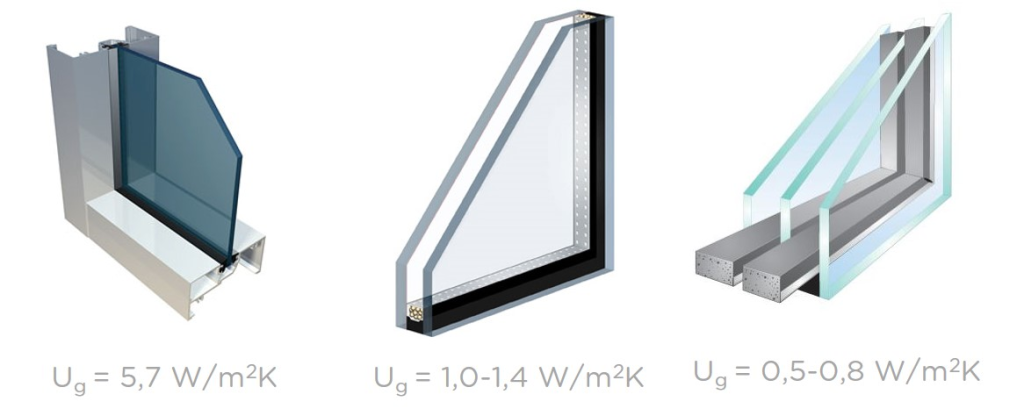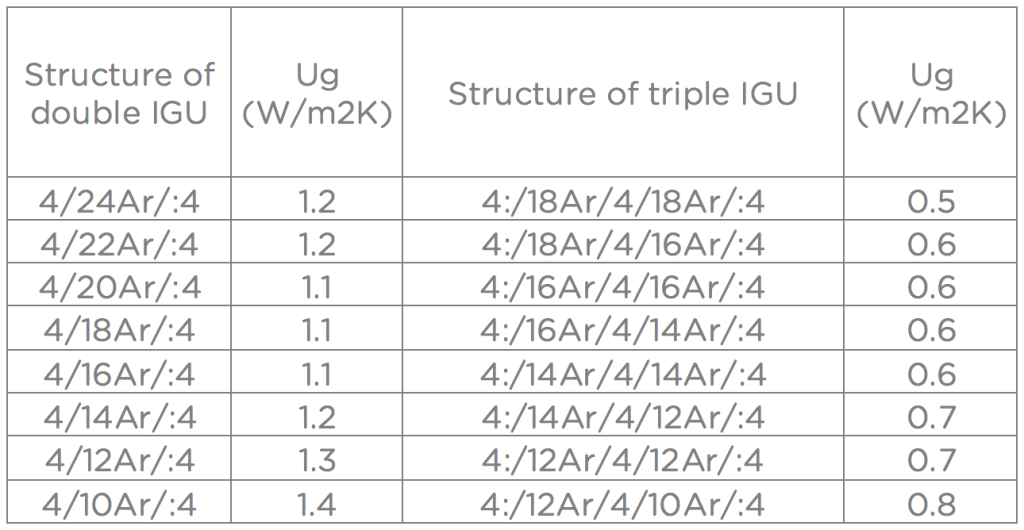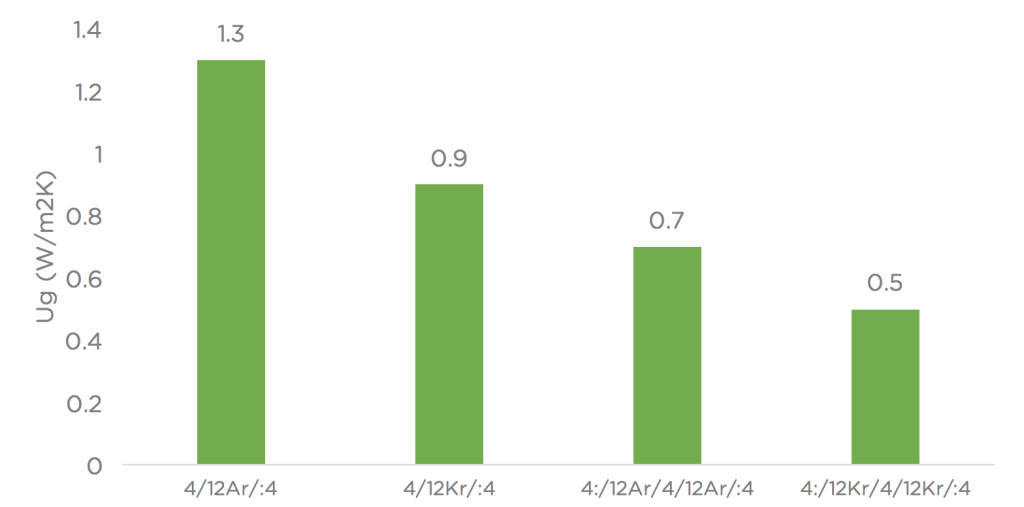As we speak of glass in windows we talk about insulated glass unit (IGU) which is made of two or three glass panes and with hermetically sealed interpane space filled with inert glass. Sealed space is closed with the use of spacers. Thermal transmittance of glass (Ug) is influence by:
- number of glass panes or interpane spaces,
- width of spacer or distance between glass panes,
- type of inert gas and
- number and type of glass coatings.
Number of glass panes is the most important factor which influences Ug. Ug of single glass is 5.7 W/m2K, Ug of most double IGUs between 1.0 W/m2K and 1,4 W/m2K and Ug of most triple IGUs between 0.5 W/m2K and 0.8 W/m2K.

Influence of number of glass panes on thermal transmittance of glass (Ug)
Width of spacer directly determines the distance between glass panes, which changes with 2 mm difference due to standard widths of spacers (10, 12, 14, 16 mm …). Final distance between glass panes is commonly determined based on maximum thickness of IGU which can be installed in window frame (e.g. 24 mm at double IGU and 40 mm or 48 mm at triple IGU), and the thickness of glass panes (e.g. 4, 6, and 8 mm). Example: 16 mm spacer can be installed in double IGU with maximum thickness of 24 mm and two 4 mm glass panes, whereas 12 mm spacer can be installed if two 6 mm glass panes are used instead. This directly influences the Ug which is presented in table bellow, whereas the thickness of glass pane does not influence the Ug.

Influence of spacer width on Ug of double and triple IGU with the same thickness of glass panes (: = position of low-e coating)
Type of inert gas also influences the Ug. Argon is used in most cases whereas Krypton is rarely used due to high price which does have such significant effect on Ug. Optimal distance between glass panes when Krypton is used is 12 mm. In such case, Ug of triple IGU is decreased for 2 W/m2K and Ug of double IGU for 0,4 W/m2K as presented at graph bellow.

Influence of type of inert glass on Ug of double and triple IGU (Ar – Argon, Kr – Krypton)
Last mentioned factor which influences the Ug is a number and type of glass coatings. There is regularly one coating on inner pane of double IGU and two coatings on inner and outer glass panes of triple IGU. In both cases, coatings are placed on the surface in the interpane space that it can not be damaged. There are different types of glass coatings which influences the Ug as well as other important characteristics of IGU like solar energy transmittance (g-value) and light transmittance (LT). There are two most widely used types of coatings: low-emissivity and solar control. Examples of the influence of coating type on Ug, g-value and LT are shown at the table bellow. Solar control coatings are usually used at hot locations with high volume of sun radiation as they prevent extensive heating of inner rooms with low g-value. Low-emissivity coatings are more appropriate for climate conditions where and insulation in cold months is an issue.

Influence of the type of glass coating on different characteristics of IGU with same structure
Double or triple IGU? According to all trends, guidelines, directions and demands in the field of new buildings as well as refurbishment, the answer seems quite straightforward – triple IGU. Ug of triple IGU is at least half of Ug of double IGU, whereas the price difference is not even close to that. Beside this we must consider also the comfort of living as the surface temperature of inner glass of double IGU is much lower compared to the one of triple IGU. And this is especially obvious in cold winter months.


